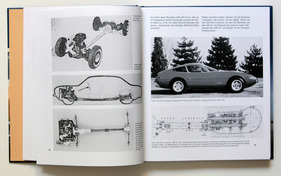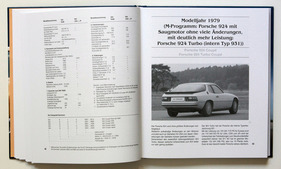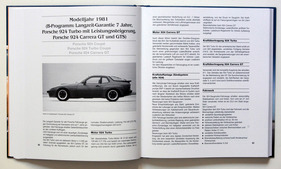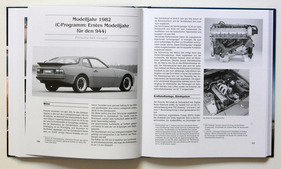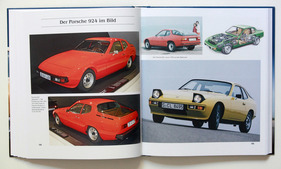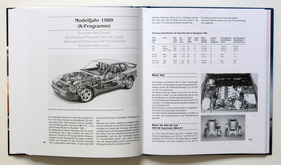Who hasn't experienced this? What is the technical situation with my model? Do the rims of the following model year fit my model year? Is the US gearbox compatible with my European delivery condition? When did disc brakes actually come as standard?
Jörg Austen fills this gap with his book on the Porsche 924 - 944 - 968 model series, which has been on the market for some time.

Not a monograph in the classic sense, but a thick compendium on the technical features of the individual models. And since Porsche sorts the model years alphabetically, the author follows this procedure. That makes sense.
The author is a Porsche man
Jörg Austen initially worked in transmission development at Porsche before switching to technical documentation and working in Porsche customer service. Perhaps the basic prerequisite for the graduate engineer, who died in 2015, to approach the small Porsche transaxle series in retirement. Austen also looked after foreign visitor groups on behalf of Porsche and passed on his knowledge there too.
Porsche Transaxle - almost 20 years in the
range
The Porsche 924 was actually supposed to be sold as a Volkswagen. But everything turned out differently: the smaller 924 - 944 - 968 series rolled off the production line at Audi NSU in Neckarsulm from 1976 and became a box-office hit. With more than 300,000 units sold, the Boxster predecessors became bestsellers. As was usual with Porsche, the four-cylinder engines had a long service life and were built for a long time, and they got better with every year. In this detailed monograph, Jörg Austen documents the changes over time and the differences between the individual model series in terms of bodywork, engine, chassis and technology on more than 250 pages.
Carefully researched - neatly documented
Each model series is briefly presented model year by model year: Significant changes are explained in a brief introduction, in some cases documented with technical drawings and their significance commented on. In the tabular section, the technical specifications are then broken down according to the sales markets for the individual models. For the 924 of the 1979 model year, for example, this results in a breakdown into 924 RdW (rest of the world); 924 USA & JP; 924 turbo RdW and 924 turbo USA & JP.
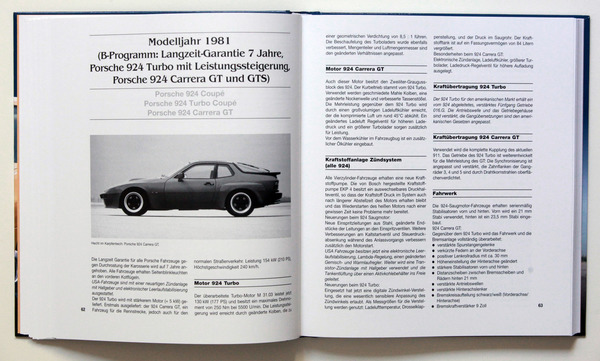
The following table now provides the reader with comprehensive information from the engine code letter to the entire technical information on 1. engine type, 2. mixture preparation, 3. transmission, 4. chassis, steering, brakes, wheels, 5. bodywork and interior, 6. electrics, 7. weight, 8. performance and 9. filling quantities. Finally, the chassis numbers are broken down meticulously according to the Porsche code. Almost five pages of tables thus provide a very differentiated overview of the 1979 model year, or enable the specific definition of your own vehicle, which you can now assign to its specifications using the chassis number, for example in the case of a re-import from the USA or Japan.
Text on technology
To ensure that the model history is not neglected, each model series also has an introduction to the model history. Porsche expert Austen outlines the development of the respective model series and provides cross-references to other model series, which is interesting, for example, with regard to the 944 and its technical relationship to the 928 engine.
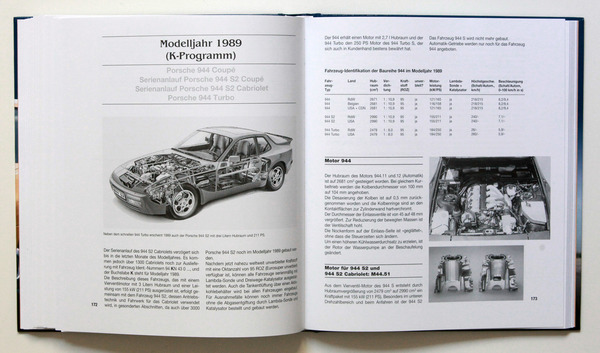
In addition, he provides background information on developments that were not pursued further, such as the idea of deriving a V6 from the 928 V8 and explains why this idea was rejected in Stuttgart. The reader also learns why the Cabriolet only went into series production so late, or that Audi also submitted an offer for series production, but this was not preferred.
A somewhat different book
The long production period of Porsche's small transaxle model series is explored here in a completely different way. Comprehensive technical documentation provides the reader with information that could only be obtained through extensive research, if at all. Whether the proximity to racing versions or the use and technology of the four-valve engines, few questions will remain unanswered. The text is excellently written, pictures and technical drawings serve to illustrate the text and explain the tabular part soberly and objectively.
Example ABS: The system is presented schematically and its relationship to the 928 design is outlined. This also tells you whether and when the system was available at extra cost or as standard. An epilogue concludes the roundelay of the respective model series. In its style and presentation, this book may serve as a model and one wonders why there are not more such monographs, which in the end are also absolutely helpful for the proof of originality.

The EUR 39.90 is money well spent, because there is no faster, simpler and better way to approach the 924s, 944s and 968s, both technically and in terms of model policy.
Money-saving tip for long-time transaxle fans
The first version of the book Porsche 924-968 by Jörg Austen was published back in 2003. Back then, the cover still showed the 924, as did the back cover. At 240 pages, the earlier version was 16 pages shorter than the later edition. The difference is made by more extensive color photo spreads, which are divided according to model series in the newer book.
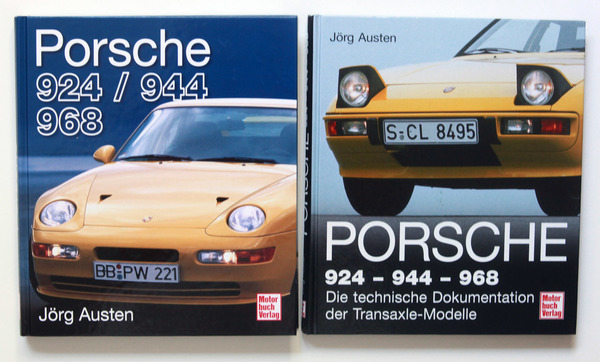
But if you already have the 2003 edition on your bookshelf, you don't necessarily need to pick up the newer book, as little has changed in terms of content, although one or two errors have certainly been corrected and some additions have been made.

Bibliographical information
- Title: Porsche 924 944 968
- Author: Jörg Austen
- Language: German
- Publisher: Motorbuch
- Edition: 1st edition 2013
- Format: 242 x 210 mm, hardcover
- Scope: 256 pages, 87 b/w photos, 50 color illustrations and 47 line drawings
- ISBN: 978-3-613-03499-0
- Price: EUR 39.90
- Buy/order: Online at amazon.de, online at Motorbuchverlag or in a good bookshop
















